Plate Tectonics is a scientific theory that describes the movement of the Earth’s lithosphere over mantle. This theory explains the formation of various geological features such as mountains, volcanoes, and earthquakes.
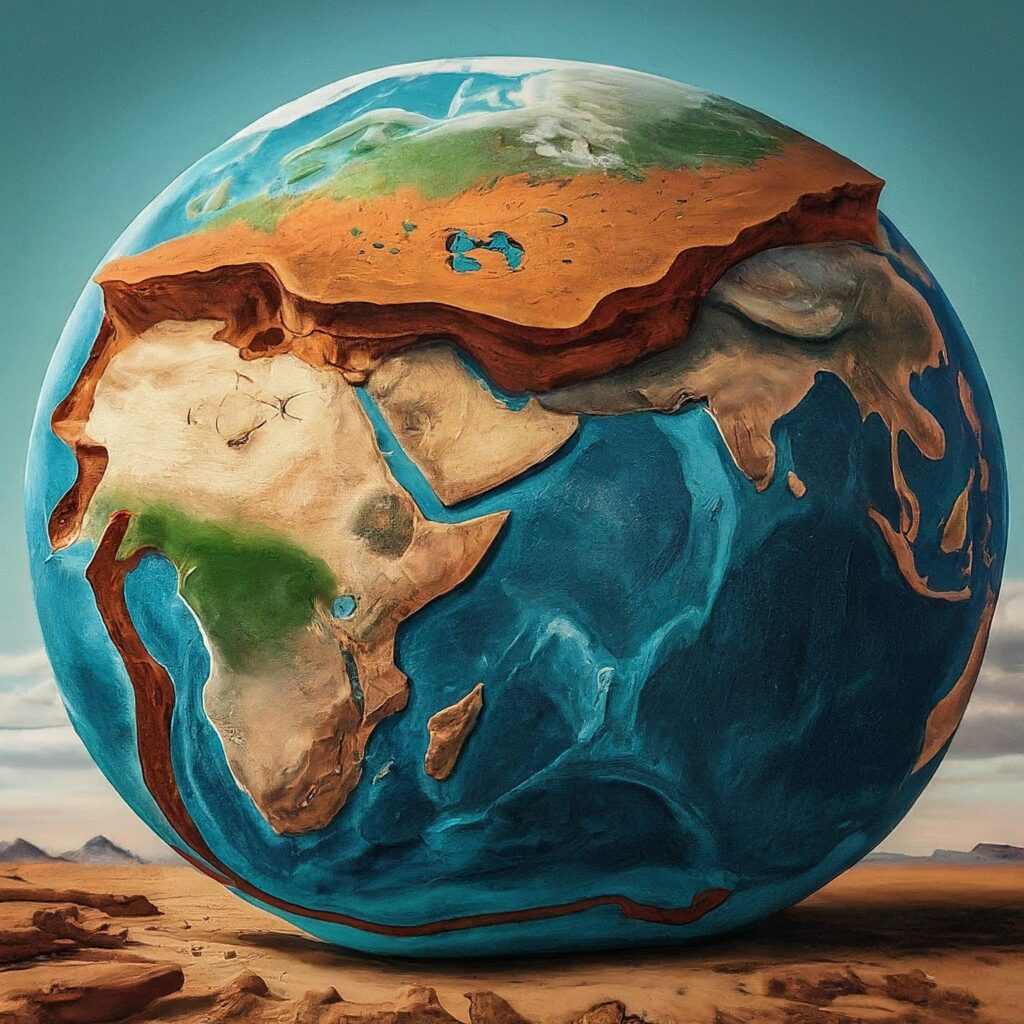
Table of Contents
What is Plate?
A tectonic plate is a massive, irregularly-shaped slab of solid rock, generally composed of both continental and oceanic lithosphere. The plate is actually parts of lithosphere. The thickness of plate is about 100 Km.

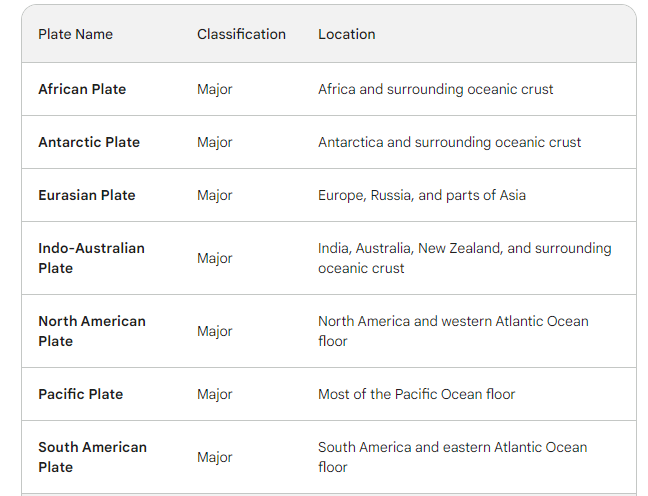
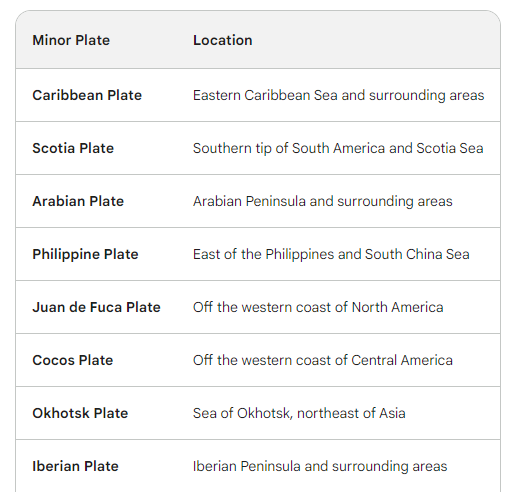
What is Plate Tectonics Theory?
The theory of plate tectonics proposes that the earth’s lithosphere is divided into seven major and some minor plates. Young Fold Mountain ridges, trenches, faults surround these major plates. These plates have been constantly moving over the globe throughout the history of the earth.
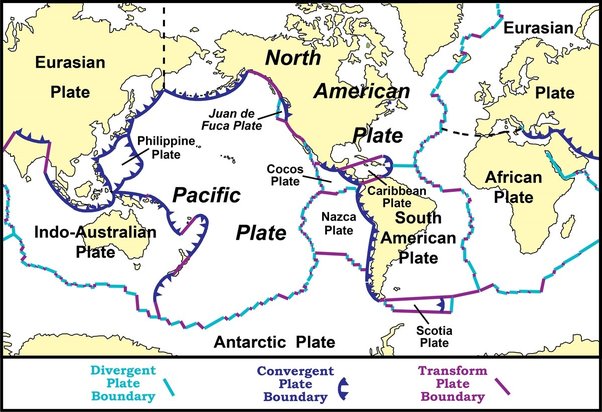
Classification of Plate Boundaries
Three types of plate boundaries are: convergent, divergent and transform.
Convergent
One plate overrides the other plate, one plate slides down in the other plate and the process is known as subduction. This pate boundary causes earth quake, Volcano and folded mountain range like Himalaya. Example: Nazca Plate subducts under the South American Plate.
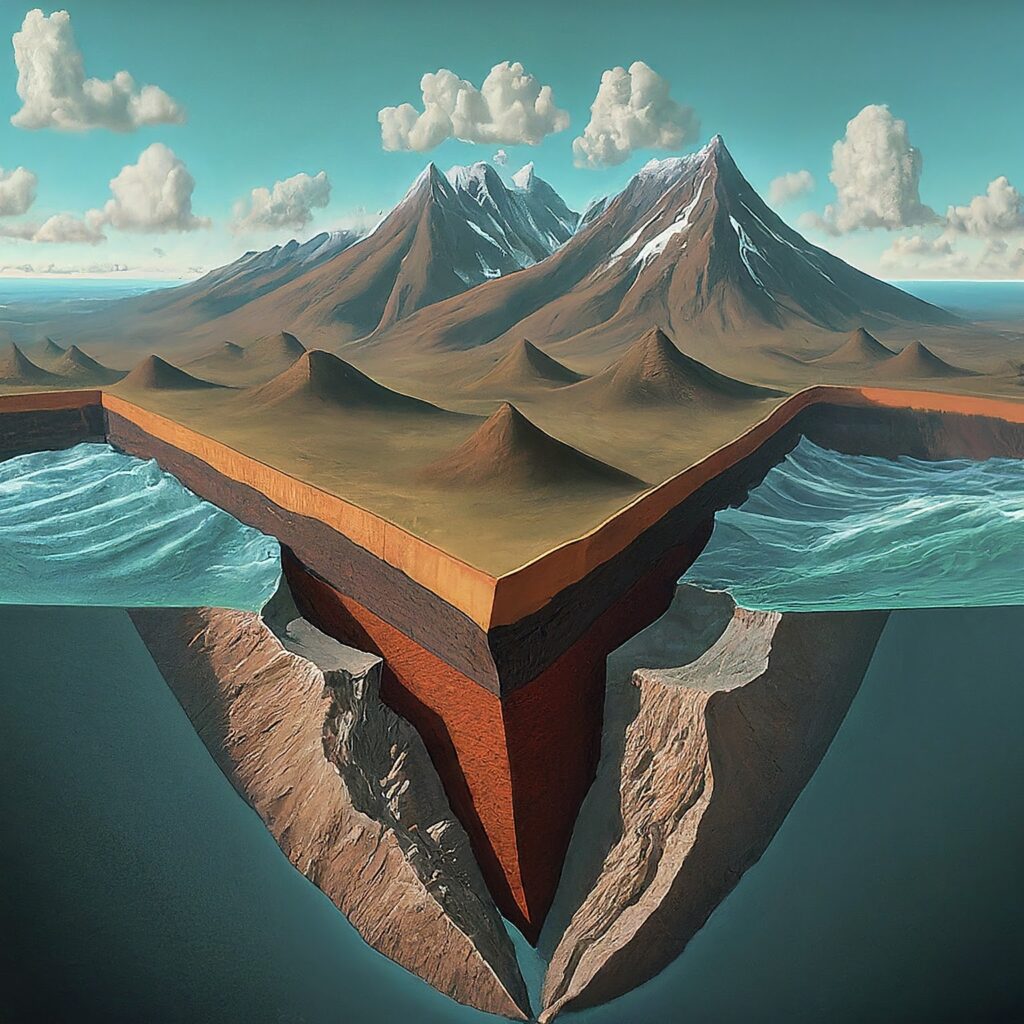
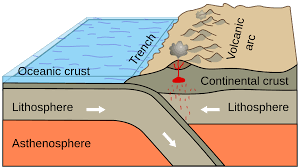
In the theory of plate tectonics, at a convergent boundary between a continental plate and an oceanic plate, the denser plate usually subducts underneath the less dense plate. It is well known that oceanic plate subduction under continental plates, and therefore oceanic plates are denser than continental plates. This subduction zone is also called Benioff Zone.
Divergent
In this boundary, the plates separate and the molten Magma comes on the surface, Active volcano is present in the divergent zone. The earth quake has shallow focus. There is a continuous formation of oceanic crust.
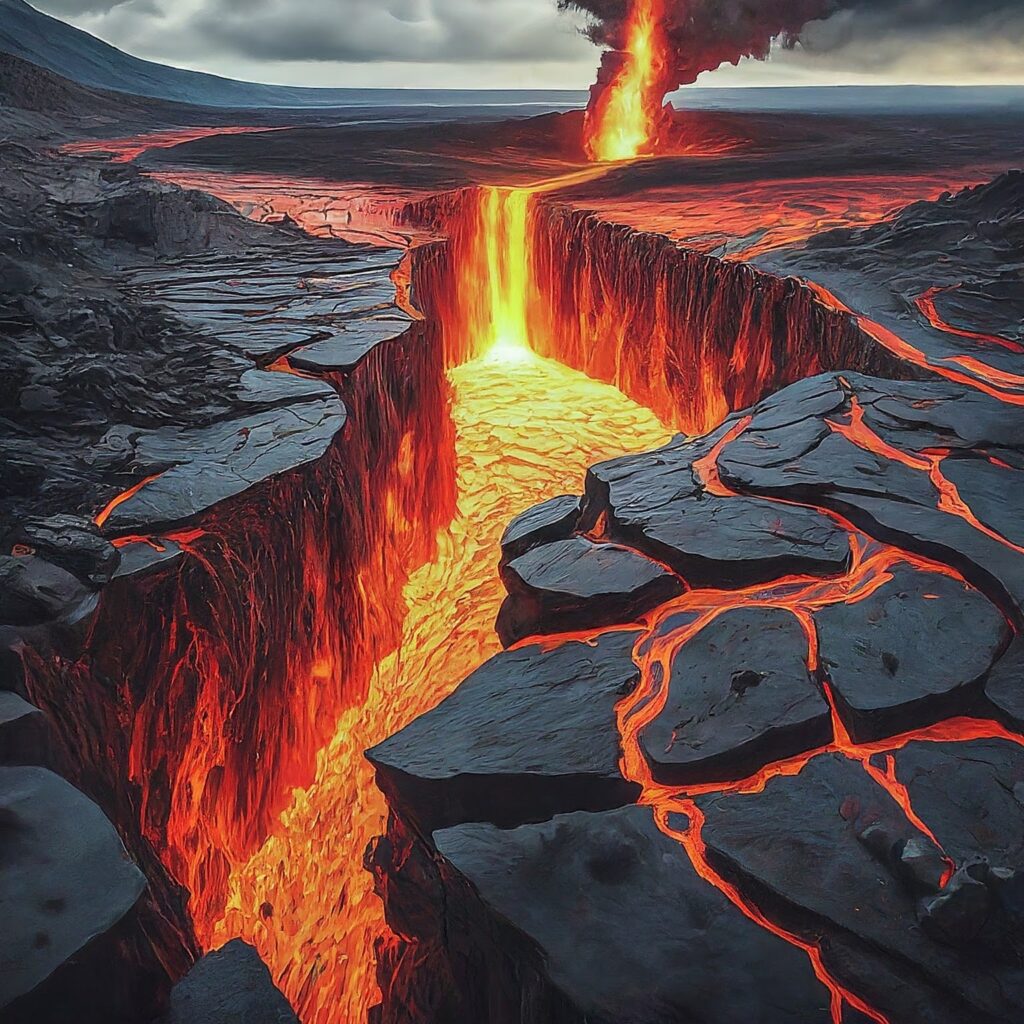
Transform
There is neither creation nor destruction along the transform fault. The plates slides laterally and there is no significant axial force.
Movement of the Indian Plate
The Indian plate includes Peninsular India and the Australian continental portions. The subduction zone along the Himalayas forms the northern plate boundary in the form of continent— continent convergence.
India was a large island situated off the Australian coast, in a vast ocean. The Tethys Sea separated it from the Asian continent till about 225 million years ago. India is supposed to have started her northward journey about 200 million years ago at the time when Pangaea broke. India collided with Asia about 40-50 million years ago causing rapid uplift of the Himalayas. About 140 million years before the present, the subcontinent was located as south as 50 S latitude.
The two major plates were separated by the Tethys Sea and the Tibetan block was closer to the Asiatic landmass. During the movement of the Indian plate towards the Asiatic plate, a major event that occurred was the outpouring of lava and formation of the Deccan Traps. This started somewhere around 60 million years ago and continued for a long period of time.
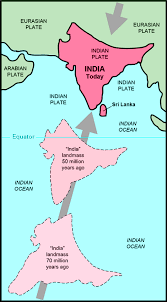
Who is moving theses Plates?
The fact that the plates move is now a well-accepted fact. The mobile rock beneath the rigid plates is believed to be moving in a circular manner. The heated material rises to the surface, spreads and begins to cool, and then sinks back into deeper depths.
This cycle is repeated over and over to generate what scientists call a convection cell. Heat within the earth comes from two main sources: radioactive decay and residual heat. Arthur Holmes first considered this idea in the 1930s, which later influenced Harry Hess’ thinking about seafloor spreading.
Cases of Convergent Boundary in Plate Tectonics
Collision of Two Oceanic Plates
The collision of two oceanic plates and subduction of the boundary of the plate of relatively denser materials results in the formation of the fold mountain ranges of island arcs and festoons, for example, island arcs and festoons formed by Japanese islands, Phillippines etc. around the western margin of the Pacific Ocean off the east coast of Asia.
The fold mountain ranges of island arcs and festoons ‘form where a section of the ocean floor is subducted in the ocean basin away from a continent i.e. where ocean floor crust is on either side of the convergent plate boundary’.
Note: According to plate tectonic theory the subducted portion of plate after reaching a depth of 100km or more starts melting due to high temperature prevailing in the upper mantle. The magma, thus formed, ascends and appears as volcanic eruption about 200km away from the oceanic trench. Since Japan is very close to the Japan Trench and hence western part of Japan is more frequented by volcanic activities. This process is still continuing as the Pacific plate is being continuously subducted under the oceanic crust along the Japan Trench.
Convergence of Continental and Oceanic Plates
The collision of continental and oceanic convergent plates results in the formation of cordillera type of folded mountains, e.g., the western cordillera of North America (including the Rockies). When one continental and the other oceanic plates collide due to their convergence along subduction or Benioff zone, the oceanic plate boundary being heavier due to comparatively denser materials is subducted below the continental plate boundary.
The sediments deposited on the continental margins are squeezed and folded due to compressive forces caused by the subduction of oceanic plate. The Rockies and the Andes mountains were formed due to subduction of the Pacific Ocean plate under the American continental plate.
Convergence of Two Continental Plates
When two convergent plates composed of continental crusts collide against each other, the continental plate having relatively denser materials is subducted under the other continental plate having comparatively lighter materials than the former.
The resultant lateral compression squeezes and folds the sediments deposited on either side of continental plate margins and the sediments of the geosynclines lying between two convergent continental plates and thus forms gigantic folded mountains e.g. the Alps and the Himalayas.
The origin of the Alpine mountains of Europe and Asia is well explained on the basis of this mechanism (collision of two convergent continental plate boundaries) of plate tectonics. There existed a long Tethys geosyncline between Eurasian plate in the north and African-Indian plate in the south during Mesozoic Era.
Evaluation of the Plate Tectonic Theory
- While the lateral extent of modern plate can be easily defined by earthquake activity, its thickness is not physically defined. This lack of definition makes it difficult to understand how plates move.
- The physical feature on the east and west of Pacific Ocean indicates that the Pacific plate moves to the east and west at the same time, being a rigid landmass it is not feasible.
- The theory remains silent on the origin of plates.
- Today, radioactivity is provided as the mechanism for both convection and the existing amount of heat in the core. However, there is no evidence to support the existence of radioactivity below the upper mantle. If radioactivity represented the driving force for convection, then why don’t we observe large amounts of radioactive elements in deep-seated volcanic eruptions (so called hot spots)?
- It is difficult to imagine how a ridge over the rising limb of a mantle convection cell would be carried down on the descending limb of the same cell.
- The force balances suggest that it is physically impossible for subduction to occur.
- Plate tectonics cannot adequately explain the configuration or large number of volcanoes (seamounts and guyots) in the Pacific basin.
Read: Geography